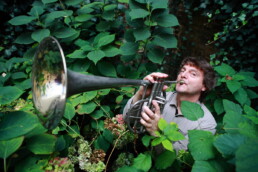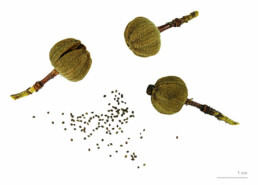Hieracium
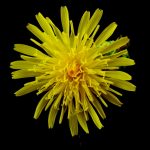 Hieracium , known by the common name hawkweed and classically as hierakion (from ancient Greek ιεράξ, hierax ‘hawk’), is a genus of the sunflower (Helianthus) family Asteraceae), and closely related to dandelion (Taraxacum), chicory (Cichorium), prickly lettuce (Lactuca) and sow thistle (Sonchus), which are part of the tribe Cichorieae. Hawkweeds, with their 10,000+ recorded species and subspecies, do their part to make Asteraceae the second largest family of flowers. Some botanists group all these species or subspecies into approximately 800 accepted species, while others prefer to accept several thousand species. Hieracium species are native to Africa, Asia, Europe, North America, Central America and South America.
Hieracium , known by the common name hawkweed and classically as hierakion (from ancient Greek ιεράξ, hierax ‘hawk’), is a genus of the sunflower (Helianthus) family Asteraceae), and closely related to dandelion (Taraxacum), chicory (Cichorium), prickly lettuce (Lactuca) and sow thistle (Sonchus), which are part of the tribe Cichorieae. Hawkweeds, with their 10,000+ recorded species and subspecies, do their part to make Asteraceae the second largest family of flowers. Some botanists group all these species or subspecies into approximately 800 accepted species, while others prefer to accept several thousand species. Hieracium species are native to Africa, Asia, Europe, North America, Central America and South America.
Lemon
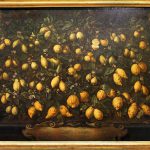 The lemon, Citrus limon, is a species of small evergreen tree in the flowering plant family Rutaceae, native to South Asia, primarily North eastern India. The tree’s ellipsoidal yellow fruit is used for culinary and non-culinary purposes throughout the world, primarily for its juice, which has both culinary and cleaning uses. Read more
The lemon, Citrus limon, is a species of small evergreen tree in the flowering plant family Rutaceae, native to South Asia, primarily North eastern India. The tree’s ellipsoidal yellow fruit is used for culinary and non-culinary purposes throughout the world, primarily for its juice, which has both culinary and cleaning uses. Read more
Myrrh
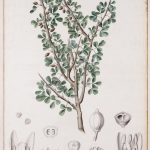 Myrrh is a natural gum or resin extracted from a number of small, thorny tree species of the genus Commiphora. Myrrh resin has been used throughout history as a perfume, incense, and medicine. Myrrh mixed with wine can also be ingested. Commiphora myrrha is native to Somalia, Oman, Yemen, Eritrea, (Somali Region) of Ethiopia and parts of Saudi Arabia. Read more
Myrrh is a natural gum or resin extracted from a number of small, thorny tree species of the genus Commiphora. Myrrh resin has been used throughout history as a perfume, incense, and medicine. Myrrh mixed with wine can also be ingested. Commiphora myrrha is native to Somalia, Oman, Yemen, Eritrea, (Somali Region) of Ethiopia and parts of Saudi Arabia. Read more
Lavandula
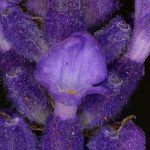 Lavandula (common name lavender) is a genus of 39 known species of flowering plants in the mint family, Lamiaceae. It is native to the Old World and is found from Capo Verde and the Canary Islands, Europe across to northern and eastern Africa, the Mediterranean, southwest Asia to southeast India. Many members of the genus are cultivated extensively in temperate climates as ornamental plants and landscape use, for use as culinary herbs, and also commercially for the extraction of essential oil. The English word lavender is generally thought to be derived from Old French lavandre, ultimately from the Latin lavare (to wash), referring to the use of infusions of the plants. The most common form in cultivation is the common or English lavender Lavandula angustifolia. Lavenders flourish best in dry, well-drained, sandy or gravelly soils in full sun. All types need little or no fertilizer and good air circulation. English lavender yields an essential oil with sweet overtones, and can be used in balms, salves, prfumes, cosmetics, and topical applications. The plant is as well used as a condiment in the kitchen and as a herb in medical treatments having an anxiolytic effect and influence in sleep quality. Lavender was one of the holy herbs used in the biblical Temple to prepare the holy essence, and nard (‘nerd’ in Hebrew) is mentioned in the Song of Solomon (4,14).
Lavandula (common name lavender) is a genus of 39 known species of flowering plants in the mint family, Lamiaceae. It is native to the Old World and is found from Capo Verde and the Canary Islands, Europe across to northern and eastern Africa, the Mediterranean, southwest Asia to southeast India. Many members of the genus are cultivated extensively in temperate climates as ornamental plants and landscape use, for use as culinary herbs, and also commercially for the extraction of essential oil. The English word lavender is generally thought to be derived from Old French lavandre, ultimately from the Latin lavare (to wash), referring to the use of infusions of the plants. The most common form in cultivation is the common or English lavender Lavandula angustifolia. Lavenders flourish best in dry, well-drained, sandy or gravelly soils in full sun. All types need little or no fertilizer and good air circulation. English lavender yields an essential oil with sweet overtones, and can be used in balms, salves, prfumes, cosmetics, and topical applications. The plant is as well used as a condiment in the kitchen and as a herb in medical treatments having an anxiolytic effect and influence in sleep quality. Lavender was one of the holy herbs used in the biblical Temple to prepare the holy essence, and nard (‘nerd’ in Hebrew) is mentioned in the Song of Solomon (4,14).
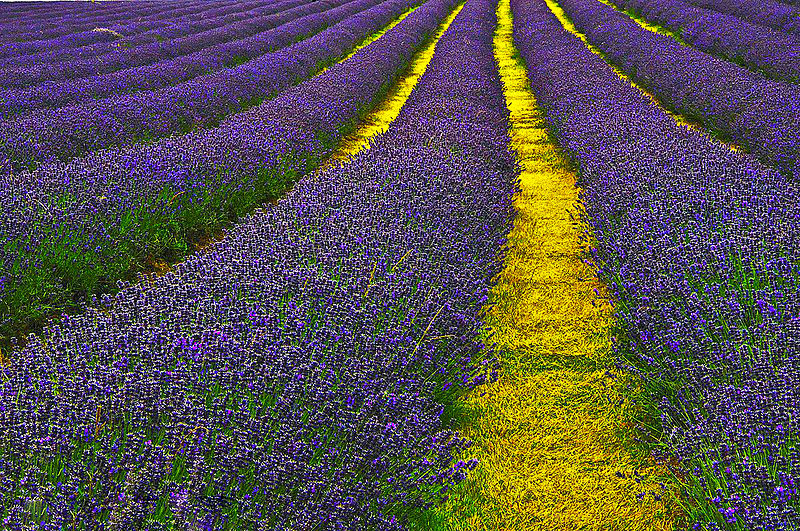
Lavandula Angustifolia, der Echte Lavendel oder Schmalblättrige Lavendel (Lavandula officinalis, Lavandula vera) ist eine Pflanzenart aus der Gattung Lavendel (Lavandula) innerhalb der Familie der Lippenblütler (Lamiaceae). Der mittellateinische Name "Lavandula" gehört zum lateinischen lavare = waschen, weil man das aromatische Kraut gern dem Waschwasser oder den Bädern zusetzte. Lavendel ist ein Lehnwort aus dem lateinischen "lavandula". Die Heimat des Lavendel sind ursprünglich die Küstenregionen des Mittelmeers. Dort kommt er an trockenen, warmen Hängen bis Dalmatien und Griechenland sowie in der Toskana in Italien weit verbreitet vor. Benediktiner-Mönche führten ihn nördlich der Alpen ein. Der Echte Lavendel gehört zu denjenigen Arten, die als winterhart gelten und daher im Freien den in Mitteleuropa üblichen Winter gut überstehen. Eingebürgert ist er bei Jena, Rudolstadt und Bad Blankenburg. Aktuell wird in Deutschland ein bescheidener Lavendelanbau in der Nähe von Detmold betrieben. Der Gebrauch des Lavendels auf den britischen Inseln geht weit zurück, denn er ist schon unter den Arzneien der Physicians of Myddvai (13. Jahrhundert) angeführt. Allerdings gilt: je kälter die Gegend, desto geruchsärmer der Lavendel. Dem Echten Lavendel wird ein breites therapeutisches Spektrum zugeschrieben. In seinem Lehrbuch der Biologischen Heilmittel (1938) sagt Gerhard Madaus: „Lavandula ist ein mildes Nervinum, das besonders bei Migräne gern gegeben wird. Man verordnet es bei Neurasthenie, Vertigo, nervösem Herzklopfen, allgemeinen nervösen Aufregungszuständen, Hysterie, Krämpfen, Ohnmachten und Schlaflosigkeit.“ Matthiolus nennt in seinem Kräuterbuch die Lavandula ein "köstlich Kraut wider alle kalten Gebresten des Hirns und der Senader/ als da ist der Schwindel/ gantze und halbe Schlag/ der fallend Siechtag/ die Schlafsucht/ Krampff/ Zittern/ Contract und Lähme".
https://vimeo.com/190195097
Neroli
 Neroli oil is an essential oil produced from the blossom of the bitter orange tree (Citrus aurantium subsp. amara or Bigaradia). Its scent is sweet, honeyed and somewhat metallic with green and spicy facets. Orange blossom is also extracted from the same blossom and both extracts are extensively used in perfumery. Orange blossom can be described as smelling sweeter, warmer and more floral than neroli. The difference between how neroli and orange blossom smell and why they are referred to with different names, is a result of the process of extraction that is used to obtain the oil from the blooms. Read more
Neroli oil is an essential oil produced from the blossom of the bitter orange tree (Citrus aurantium subsp. amara or Bigaradia). Its scent is sweet, honeyed and somewhat metallic with green and spicy facets. Orange blossom is also extracted from the same blossom and both extracts are extensively used in perfumery. Orange blossom can be described as smelling sweeter, warmer and more floral than neroli. The difference between how neroli and orange blossom smell and why they are referred to with different names, is a result of the process of extraction that is used to obtain the oil from the blooms. Read more
Opoponax
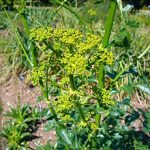 Opoponax refers to a kind of gum resin (natural substance that is a mixture of water-soluble gum and alcohol-soluble resin) obtained from a plant called πάνακες (Panaces, Panakes, Panax or Panacea), traditionally considered to have medicinal properties. Pliny (Historia Naturalis) and Dioscorides (De Materia Medica) described various kinds of Panaces with uncertain identifications.Read more
Opoponax refers to a kind of gum resin (natural substance that is a mixture of water-soluble gum and alcohol-soluble resin) obtained from a plant called πάνακες (Panaces, Panakes, Panax or Panacea), traditionally considered to have medicinal properties. Pliny (Historia Naturalis) and Dioscorides (De Materia Medica) described various kinds of Panaces with uncertain identifications.Read more
Petitgrain
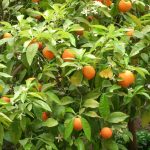 Petitgrain is an essential oil that is extracted from the leaves and green twigs of the bitter orange tree (Citrus aurantium ssp. amara) via steam distillation. It is also known as petitgrain bigarade. Its main regions of production are Paraguay and France, with the former’s product being of higher odour tenacity. Read more
Petitgrain is an essential oil that is extracted from the leaves and green twigs of the bitter orange tree (Citrus aurantium ssp. amara) via steam distillation. It is also known as petitgrain bigarade. Its main regions of production are Paraguay and France, with the former’s product being of higher odour tenacity. Read more
Peumus boldus
 Peumus boldus, the only species in the genus Peumus, is commonly known as boldo (from the Mapudungun name foḻo). This tree of the family Monimiaceae is natively endemic to the central region of Chile, occurring from 33° to 40° southern latitude. Boldo has also been introduced to Europe and North Africa, though it is not often seen outside botanical gardens. Read more
Peumus boldus, the only species in the genus Peumus, is commonly known as boldo (from the Mapudungun name foḻo). This tree of the family Monimiaceae is natively endemic to the central region of Chile, occurring from 33° to 40° southern latitude. Boldo has also been introduced to Europe and North Africa, though it is not often seen outside botanical gardens. Read more
Picea (spruce)
 A spruce is a tree of the genus Picea a genus of about 35 species of coniferous evergreen trees in the family Pinaceae, found in the northern temperate and boreal (taiga) regions of the Earth. Spruces are large trees, from about 20–60 m tall when mature, and have whorled branches and conical form. Read more
A spruce is a tree of the genus Picea a genus of about 35 species of coniferous evergreen trees in the family Pinaceae, found in the northern temperate and boreal (taiga) regions of the Earth. Spruces are large trees, from about 20–60 m tall when mature, and have whorled branches and conical form. Read more
Salvia rosmarinus (rosemary)
 Salvia rosmarinus, commonly known as rosemary, is a woody, perennial herb with fragrant, evergreen, needle-like leaves and white, pink, purple, or blue flowers, native to the Mediterranean region. Until 2017, it was known by the scientific name Rosmarinus officinalis, now a synonym. It is a member of the mint family Lamiaceae, which includes many other herbs. The name "rosemary" derives from Latin ros marinus ("dew of the sea"). Read more
Salvia rosmarinus, commonly known as rosemary, is a woody, perennial herb with fragrant, evergreen, needle-like leaves and white, pink, purple, or blue flowers, native to the Mediterranean region. Until 2017, it was known by the scientific name Rosmarinus officinalis, now a synonym. It is a member of the mint family Lamiaceae, which includes many other herbs. The name "rosemary" derives from Latin ros marinus ("dew of the sea"). Read more
Sandalwood
 Sandalwood is a class of woods from trees in the genus Santalum. The woods are heavy, yellow, and fine-grained, and, unlike many other aromatic woods, they retain their fragrance for decades. Sandalwood oil is extracted from the woods for use. Both the wood and the oil produce a distinctive fragrance that has been highly valued for centuries.Read more
Sandalwood is a class of woods from trees in the genus Santalum. The woods are heavy, yellow, and fine-grained, and, unlike many other aromatic woods, they retain their fragrance for decades. Sandalwood oil is extracted from the woods for use. Both the wood and the oil produce a distinctive fragrance that has been highly valued for centuries.Read more
Sweet Grass
 Hierochloe odorata or Anthoxanthum nitens (commonly known as sweet grass, manna grass, Mary’s grass or vanilla grass, and as holy grass in the UK, is an aromatic herb native to northern Eurasia and North America. It is a sacred grass of the indigenous peoples of Canada and the United States. It is used as a smudge, in herbal medicine and in the production of distilled beverages. It owes its distinctive sweet scent to the presence of coumarin.
Hierochloe odorata or Anthoxanthum nitens (commonly known as sweet grass, manna grass, Mary’s grass or vanilla grass, and as holy grass in the UK, is an aromatic herb native to northern Eurasia and North America. It is a sacred grass of the indigenous peoples of Canada and the United States. It is used as a smudge, in herbal medicine and in the production of distilled beverages. It owes its distinctive sweet scent to the presence of coumarin.
Read more
The Incense of Music No. 8 - Atzakas, Chisholm, Fotinaki
A Multisensory Concert - 22. August 2016, 11:00 p.m. Hayden Chisholm: sax, sruti box, voice – Thimios Atzakas, oud – Katerina Fotinaki: voice, guitar, loops – Fabio Dondero: Incense burning – Boswellia Sacra (Oman), Juniperus communis (Germany) and Elemi (Philippines) – Arches of Aghios Dimitrios, Agios Lavrentios, Greece, during Music Village Festival - http://www.music-village.gr/en/concerts-eventsRead more
The Incense of Music No. 7 - Shilkloper
A Multisensory Concert -16. December 2015, 7:30 p.m. Arkady Shilkloper: French Horn, Fluegelhorn, Alphorn, Didgeridoo – Fabio Dondero: Incense burning – Birch (betula) (Russia) and Juniperus communis (Germany) – Circle 1 Berlin – Platform for Art and Culture Mittenwalderstrasse 47 10961 Berlin Kreuzberg http://circle1berlin.com/Read more
The Incense of Music No. 6 - Duo Aletchko
A Multisensory Concert – 4th December 2015 – 7:00 p.m.- Duo Aletchko - Alexey Kochetkov: Violin; Christian Varas: Guitar - Fabio Dondero: Incense burning - Copal (Mexiko, Peru) and Labdanum (Spain) – Circle 1 Berlin – Platform for Art and Culture Mittenwalderstrasse 47 10961 Berlin Kreuzberg http://circle1berlin.com/Read more

 Deutsch
Deutsch
